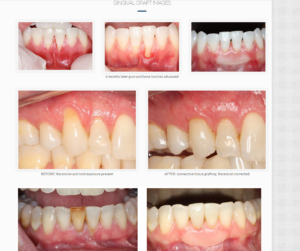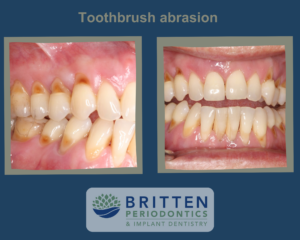Want to be able to eat ice cream again?
Tooth pain that you experience because of sensitivity to hot, cold, or acidic food or drink can be caused by decay, fractured teeth or worn fillings. But gum disease, causing exposed roots due to a receding gum line, along with with worn teeth or roots can also be the source of the problem.
Healthy teeth have a layer of enamel that protects the crowns of your teeth—the part you can see above the gum line. Below the gum line a layer called cementum protects the roots, and below the enamel and the cementum is dentin. Dentin contains microscopic tubules (small canals). If dentin loses its protective covering of enamel or cementum –or sometimes when gums recede — these tubules allow heat and cold or acidic or sticky foods to reach the nerves and cells inside the tooth. The result can be hypersensitivity.
Sensitive teeth can be treated in a variety of ways. Dr. Britten will recommend the appropriate treatment based on the cause of your sensitivity. Those might include:
– A de-sensitizing or prescription toothpaste containing minerals or compounds that help block transmission of sensation from the tooth surface to the nerve. Repeated applications (4 to 6 weeks) are usually necessary before the sensitivity is reduced.
– Application of a fluoride varnish or Kuraray desensitizing mineral powder, an in-office treatment which strengthens tooth enamel and reduces the transmission of sensations.
– Sometimes gum grafting is needed. This is a surgical procedure to protect the root and reduce sensitivity by replacing gum tissue that has been lost from the root.
Proper oral hygiene can often prevent tooth pain not caused by trauma. Contact us today if you have any questions about your daily oral hygiene routine or concerns about tooth sensitivity.
[iphorm id=”3″ name=”Contact form”]
Share this post on:







